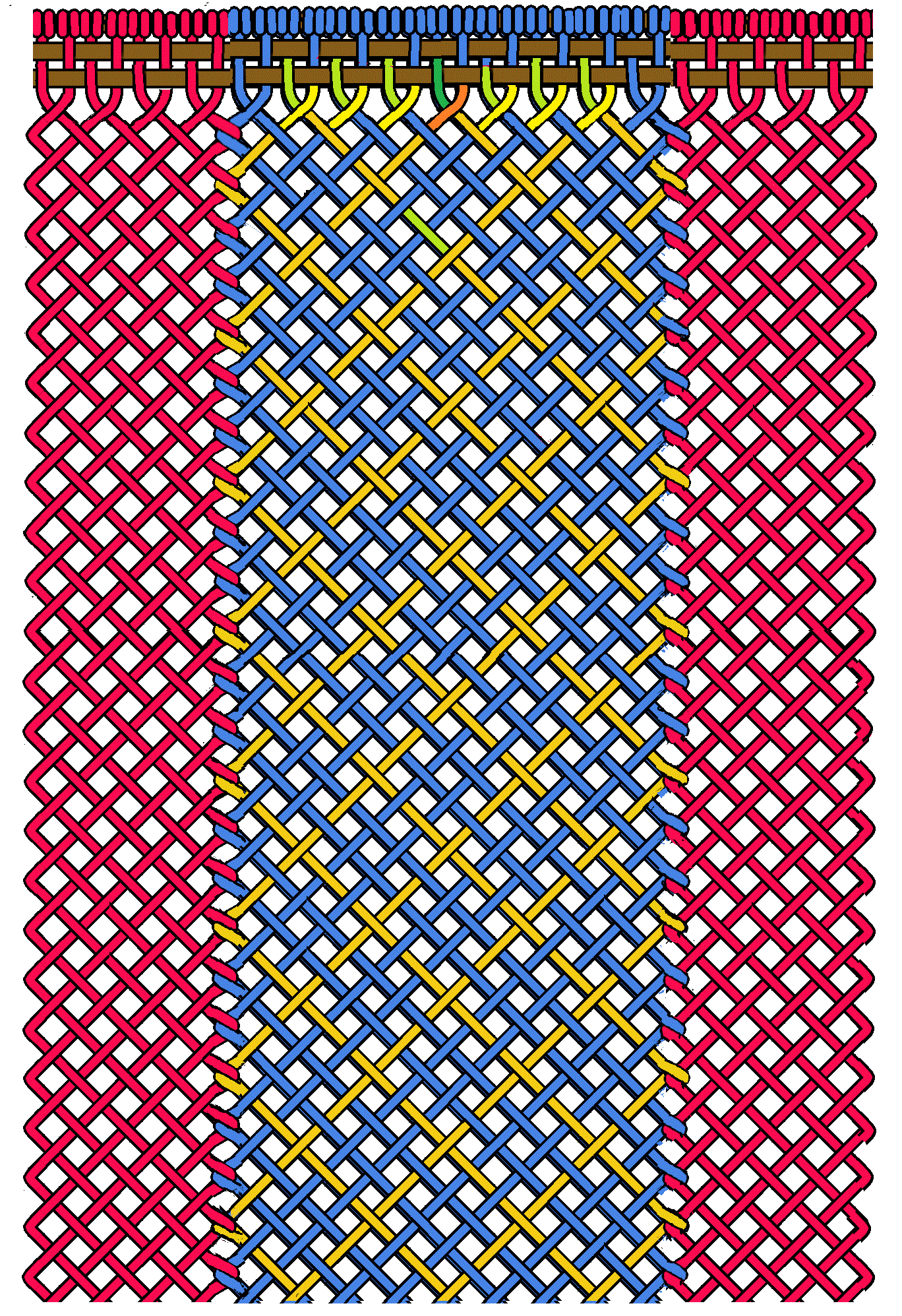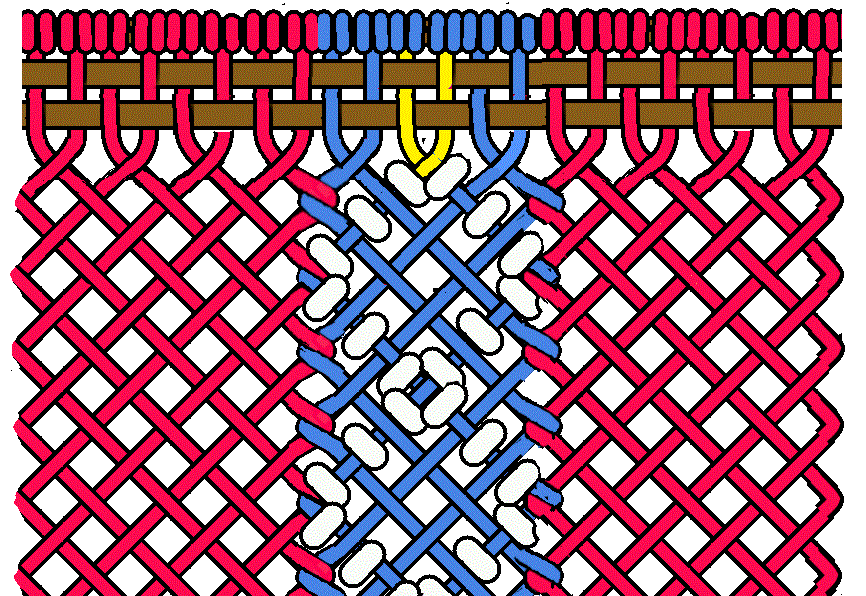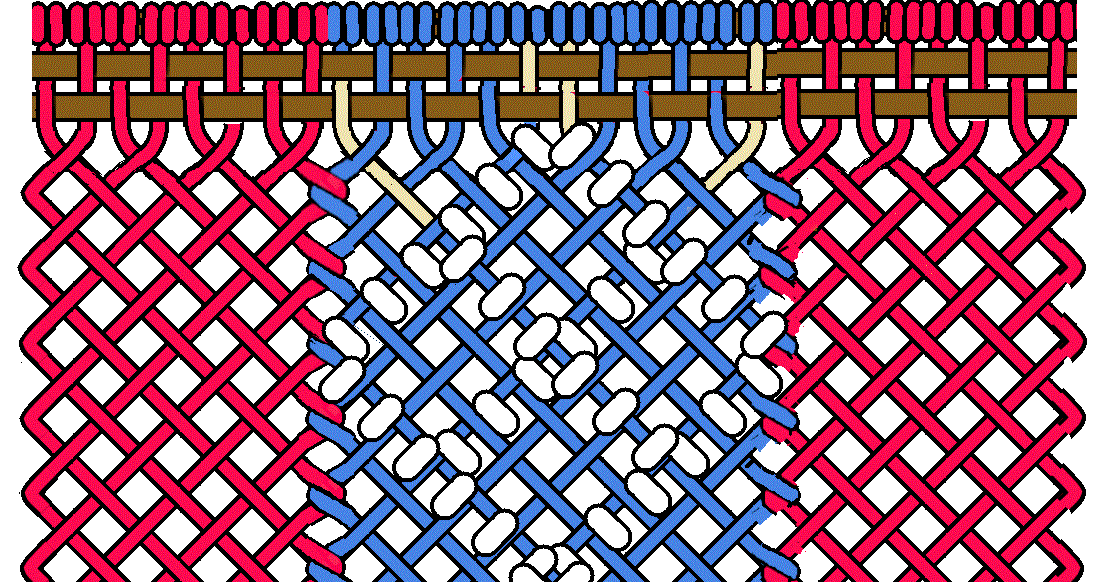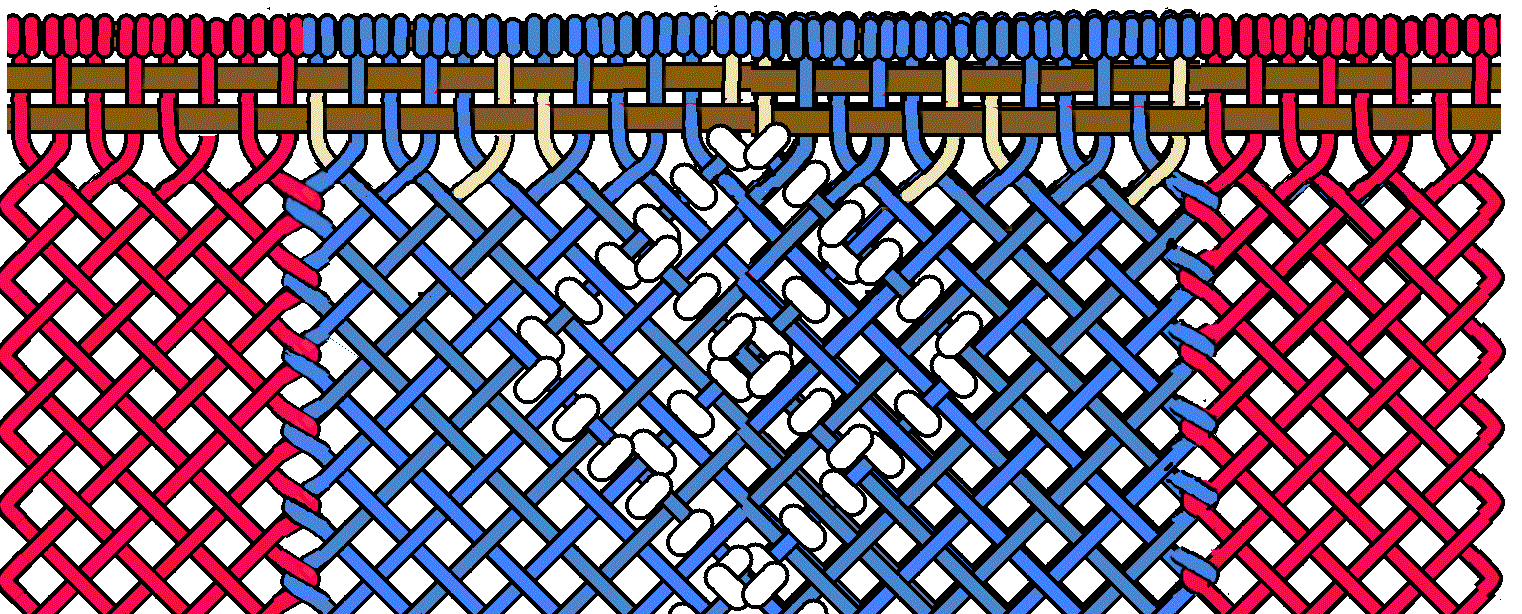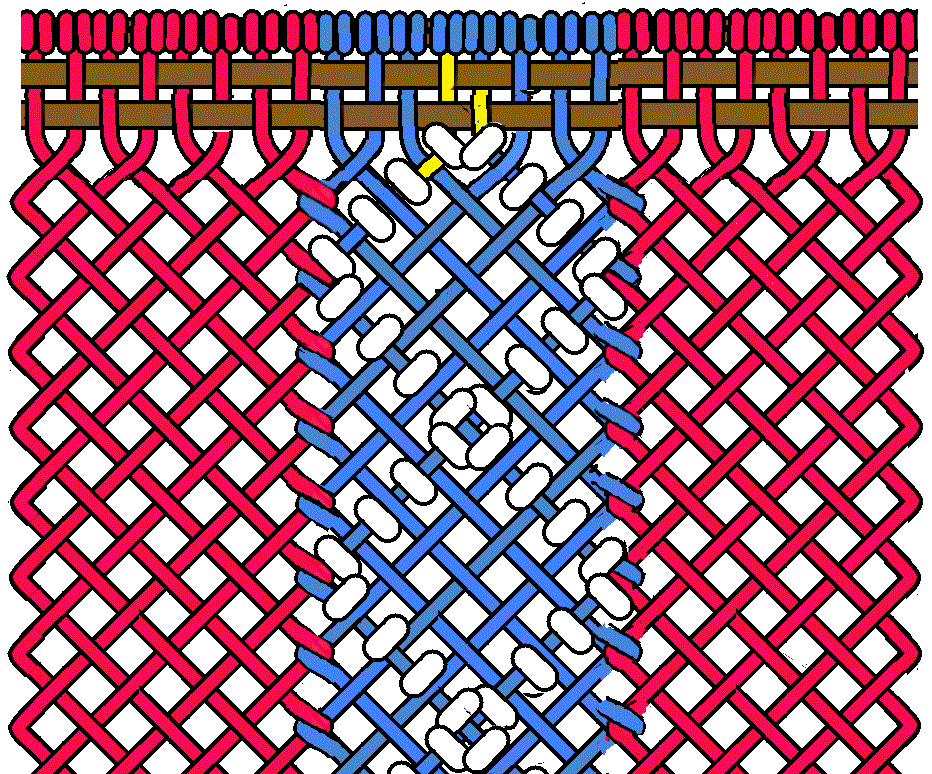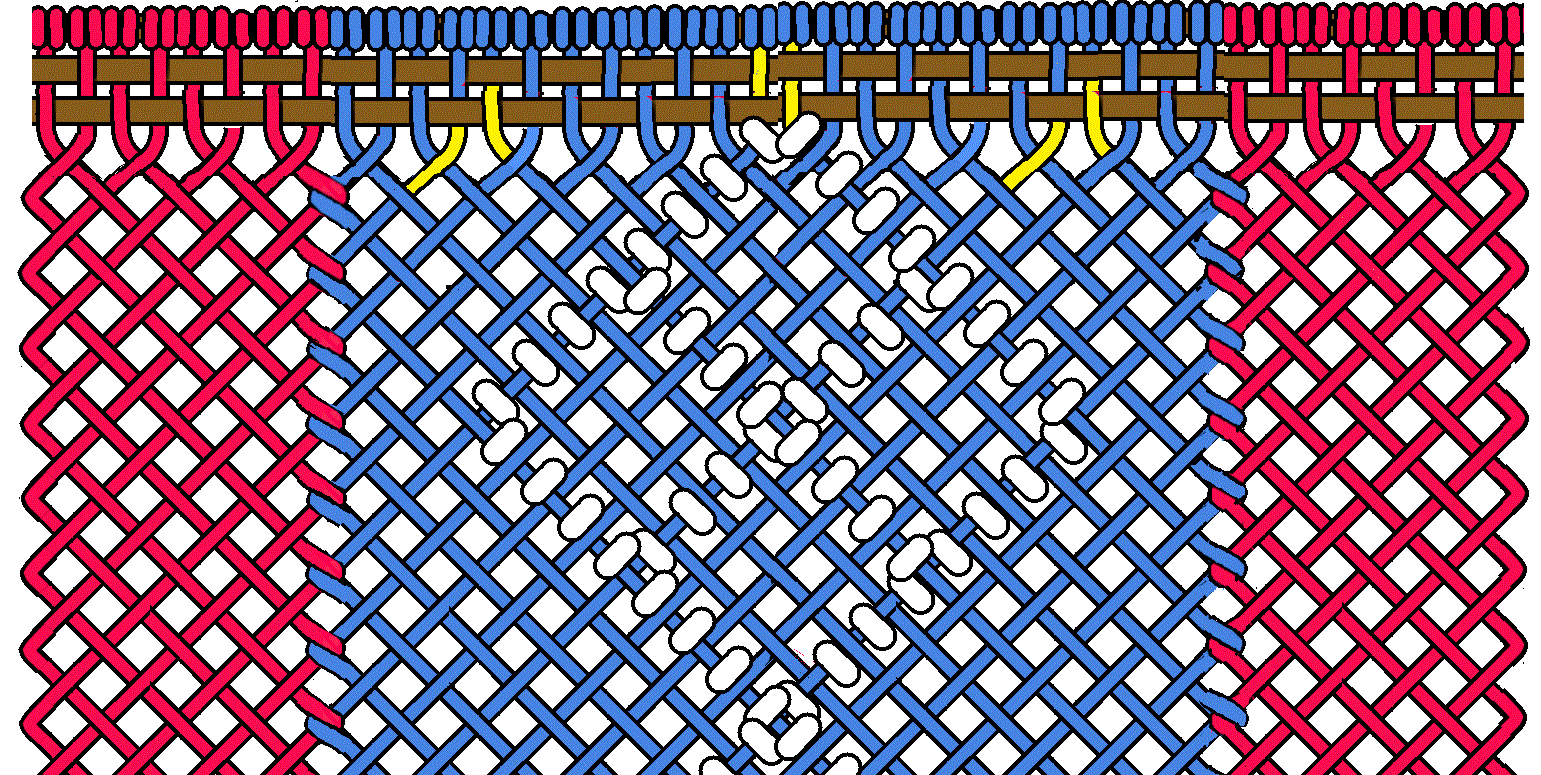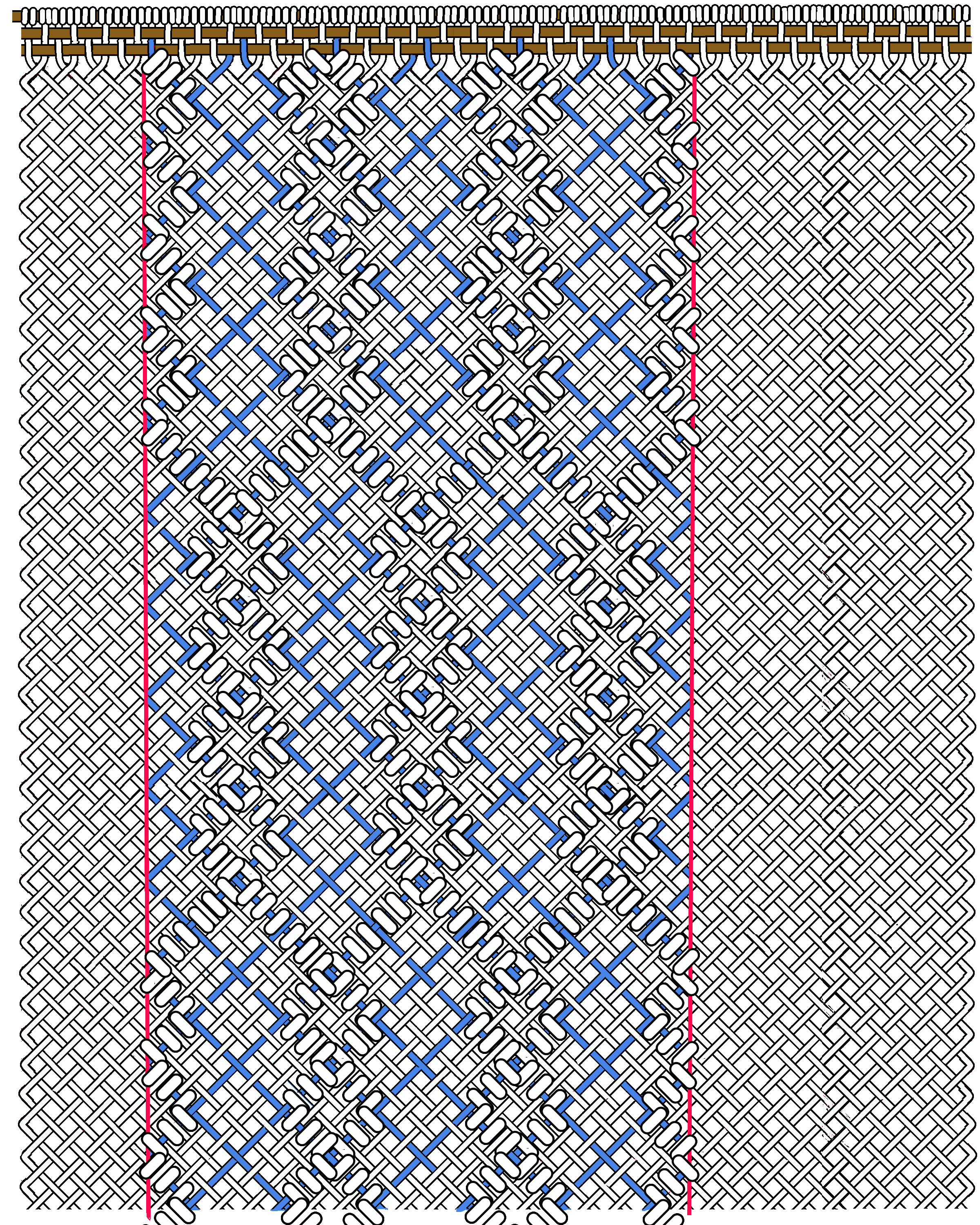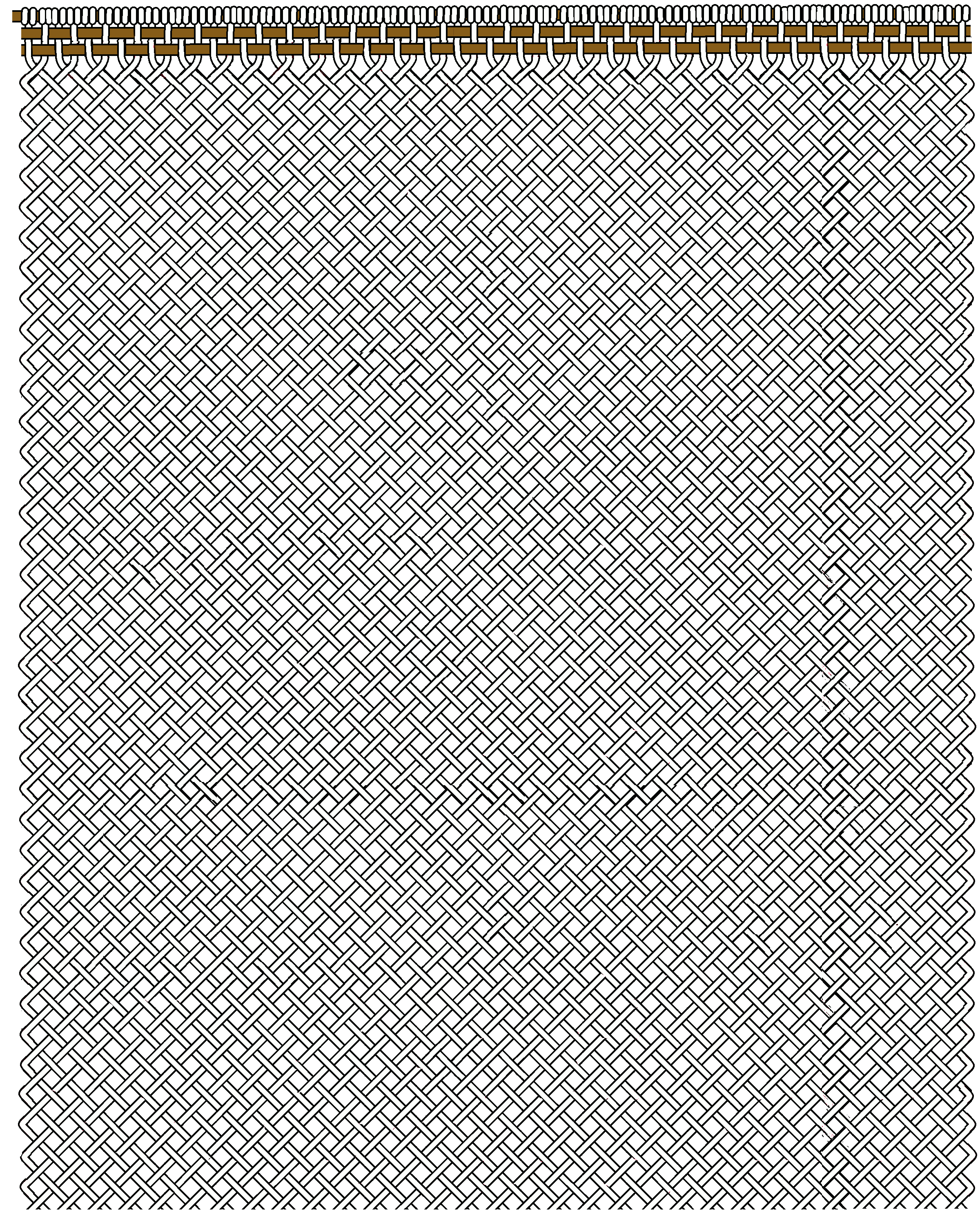Diamond Matrix Beading Pattern
A diamond matrix can be used to generate geometric beading patterns for
openface fingerweaving.
A diamond matrix is created by stringing beads on a selected number of strands.
In the example, there is a total of 18 blue strands 6 of these strand are
carrier strands for the beads. The total number of strands must be a even
number and a multiple of the number of beads on each side of the beaded
diamonds in the matrix. The example is a 3 bead matrix. To determine which
strands are the carrier strands, start at the middle. The 2 middle strands are
used as carrier strands. When the shed is picked up, the shed divides the
stands into two layers. One layer is worked on a diagonal from the left to
the right, the other is worked on a diagonal from the right to the left. In
each layer, the third strand from each of the middle carrier strands becomes a
carrier strand.
 <
<
